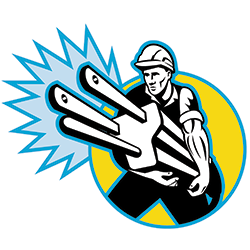 Effective exhibit lighting offers myriad benefits, including everything from highlighting key products and drawing visitors into the space to directing traffic and adding eye-catching color, messaging, and motion. But when each dollar spent must be stretched as far as possible, most exhibitors have to keep a close eye on every line-item cost, regardless of whether it's a giveaway or the entire theatrical-lighting package.
Effective exhibit lighting offers myriad benefits, including everything from highlighting key products and drawing visitors into the space to directing traffic and adding eye-catching color, messaging, and motion. But when each dollar spent must be stretched as far as possible, most exhibitors have to keep a close eye on every line-item cost, regardless of whether it's a giveaway or the entire theatrical-lighting package.
So here are five money-saving strategies specifically geared toward lighting design. If you use these tips to spend your money wisely, you might be able to afford a spectacular lighting design on a modest budget.
1. Review the initial exhibit-design concept with your lighting partner. Many exhibitors think they're jumping the gun if they bring their lighting-design team into initial discussions with exhibit designers. That is, exhibitors often assume that lighting designers should only enter the process once the booth design is finalized.
In reality, lighting designers ought to at least have a place at the table during the exhibit-design discussion so they can raise effectiveness- and cost-related lighting concerns and offer suggestions. During the exhibit-design phase, your lighting partner can give you a good idea about what lighting strategies will and won't work with the proposed design, and where you might run into problems. Your partner can also give you an ongoing cost estimate to ensure that all elements of your design stay within budget. Plus, lighting designers can often react to any suggested layout changes on the spot. For example, if you want to move a product display to the right corner of the booth, they can explain how that will affect your lighting design and estimate the cost to reposition the rigging if necessary.
2. Ask for cost-saving lighting tips prior to finalizing the exhibit design. During the initial exhibit-design meetings, ask your lighting designer for cost-saving alternatives. Sometimes simply moving an exhibit component forward or backward a couple of feet can represent the difference between hanging a light directly from a venue structure, as opposed to having to add complex rigging for your truss system, which is a much more expensive option to hang the same fixture. Or, by just moving two demo pods closer to each other you might be able to illuminate both of them via lighting from the same truss, as opposed to having to install two separate sets of lights and truss.
Sometimes, lighting designers can also work with exhibit designers to ensure the selected exhibitry is lighting-design friendly. For example, by beefing up the diameter of a structural-support pipe, you might be able to mount lighting fixtures directly to your exhibit structure, rather than adding overhead truss. Or, by using a certain type of reflective fabric or finish, you could eliminate a few lights from your design. Again, the idea is merely to involve the lighting designer up front and to maintain an open, cost-conscious conversation between all members of your design team.
3. Insist that lighting designers and other subcontractors collaborate on the installation-and-dismantle plan. Particularly when there are multiple firms involved, make sure everyone has a voice in the I&D plan. To ensure that every minute of I&D labor is put to good use, the process must be completed in a logical sequential order, from laying carpet and installing truss to focusing spotlights. If all of the key players aren't involved in the I&D planning process, your install could be a budgetary disaster, with one team standing around waiting for another to finish its job — all while everyone is on the clock.
4. Don't piecemeal your lighting plan. Instead of hiring a turnkey lighting firm, some exhibitors enlist their own internal staff or exhibit house to piece together their lighting programs, often spending dozens of hours sourcing equipment rentals, lining up laborers, choreographing shipping, and developing an I&D schedule. While you might save a dollar or two, you'll likely spend more in the long run.
For example, if you select light fixtures yourself, you could end up with less energy-efficient options that require more electricity, or worse yet, with the wrong fixtures to do the job adequately. Or, if you misread the I&D schedule — overestimating or underestimating the amount of time needed, it could be a big hit on the budget. Don't forget; time isn't free. Thus, all of the time you or your exhibit-house reps spend researching the process is also costing you money.
So while it might seem illogical at first, paying a bit more for your lighting partner to manage the entire process will save you time and money down the road. What's more, good lighting companies often own their own equipment, or can leverage vendor and professional relationships to obtain equipment more cost effectively than you can, and they can probably spot red flags and sidestep any equipment or installation issues before they happen.
5. Prioritize your tactics. Sometimes, despite your best efforts, you still might not have enough money in your coffers to support the lighting plan you've devised. Or, you could hit an unexpected snag — such as a company merger, major budget cut, or new-product introduction — that eats up a big portion of your budget, leaving you scratching your head about how you're even going to get your booth to the show venue much less light it effectively.
So always have a game plan as to what lighting elements are most important and what you might be able to eliminate if disaster strikes, and to then communicate this plan to your lighting designers. If they know what elements might hit the chopping block at some point, they can better plan your rigging and design around these potential changes and squeeze every dime for all it's worth.
The best way to create such a plan is to prioritize your lighting elements into critical, necessary, and ancillary elements. Critical lighting elements typically include anything that illuminates your products and signage, as people need to know who you are and what you're offering before they'll even step foot in your booth.
Necessary lighting elements illuminate the booth as a whole, as opposed to leaving various areas in the dark. Generally speaking, these lighting components increase the overall level of light in the booth space, making it easier for attendees to navigate the environment and locate the products and messaging that interest them.
Ancillary lighting isn't critical or absolutely necessary and often includes color washes, logo messaging, moving elements, projected patterns, ethereal hazes, and various other special effects. These elements certainly add to a booth experience, but if you have to cut something, this is likely the place to start snipping.
Granted, once you've established a lighting design, it's emotionally difficult to cut even a single element. But with a carefully prioritized plan, the trimming gets a little easier. Plus, if you implement the aforementioned cost-conscious strategies, you can ensure that every lighting-design dollar is well spent, and decrease the chance of last-minute snips.



 Cost-Conscious Lighting
Cost-Conscious Lighting We're incorporating a lighting design with significant rigging into our new exhibit. How can I control costs?
We're incorporating a lighting design with significant rigging into our new exhibit. How can I control costs? Effective exhibit lighting offers myriad benefits, including everything from highlighting key products and drawing visitors into the space to directing traffic and adding eye-catching color, messaging, and motion. But when each dollar spent must be stretched as far as possible, most exhibitors have to keep a close eye on every line-item cost, regardless of whether it's a giveaway or the entire theatrical-lighting package.
Effective exhibit lighting offers myriad benefits, including everything from highlighting key products and drawing visitors into the space to directing traffic and adding eye-catching color, messaging, and motion. But when each dollar spent must be stretched as far as possible, most exhibitors have to keep a close eye on every line-item cost, regardless of whether it's a giveaway or the entire theatrical-lighting package.


